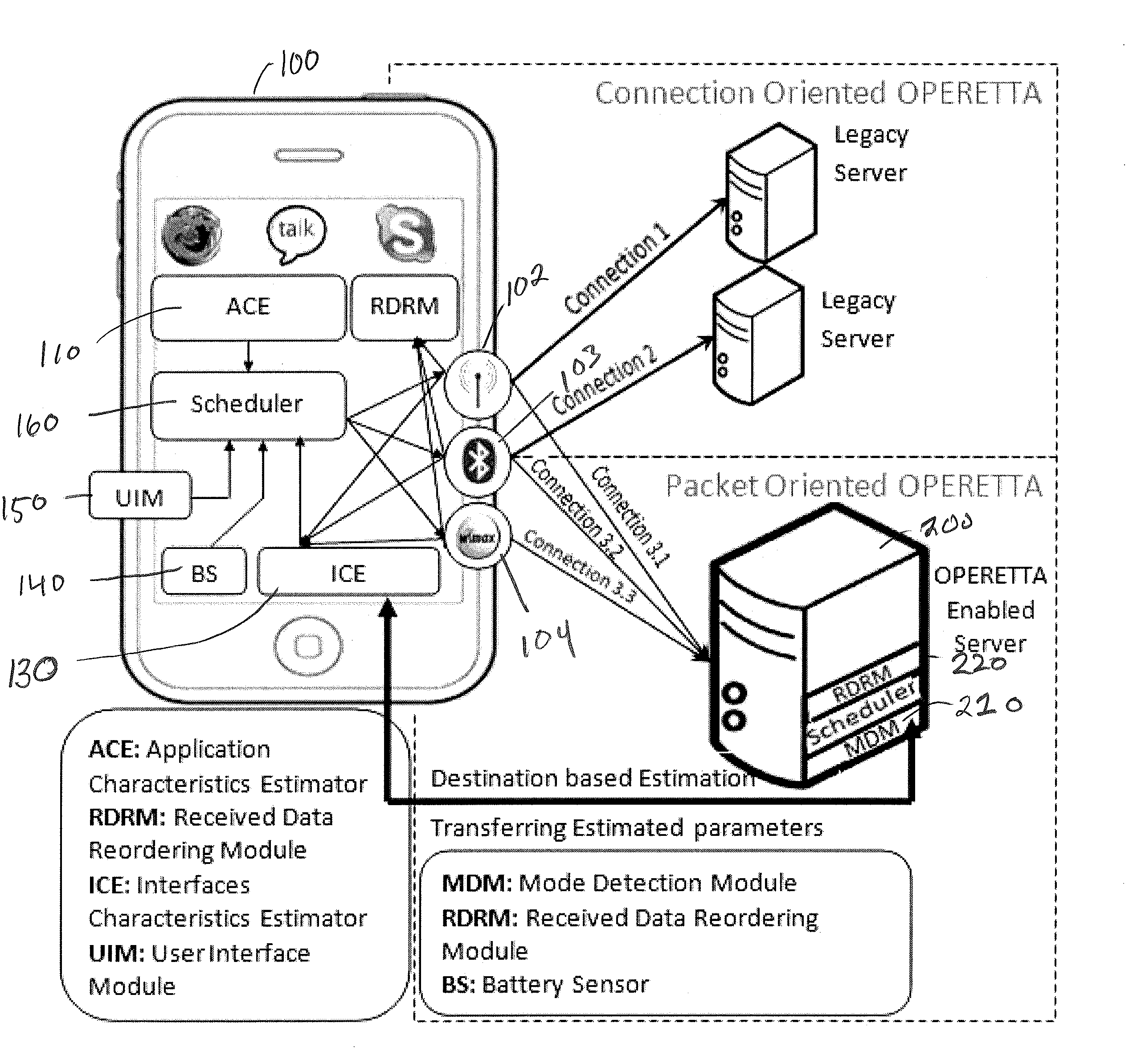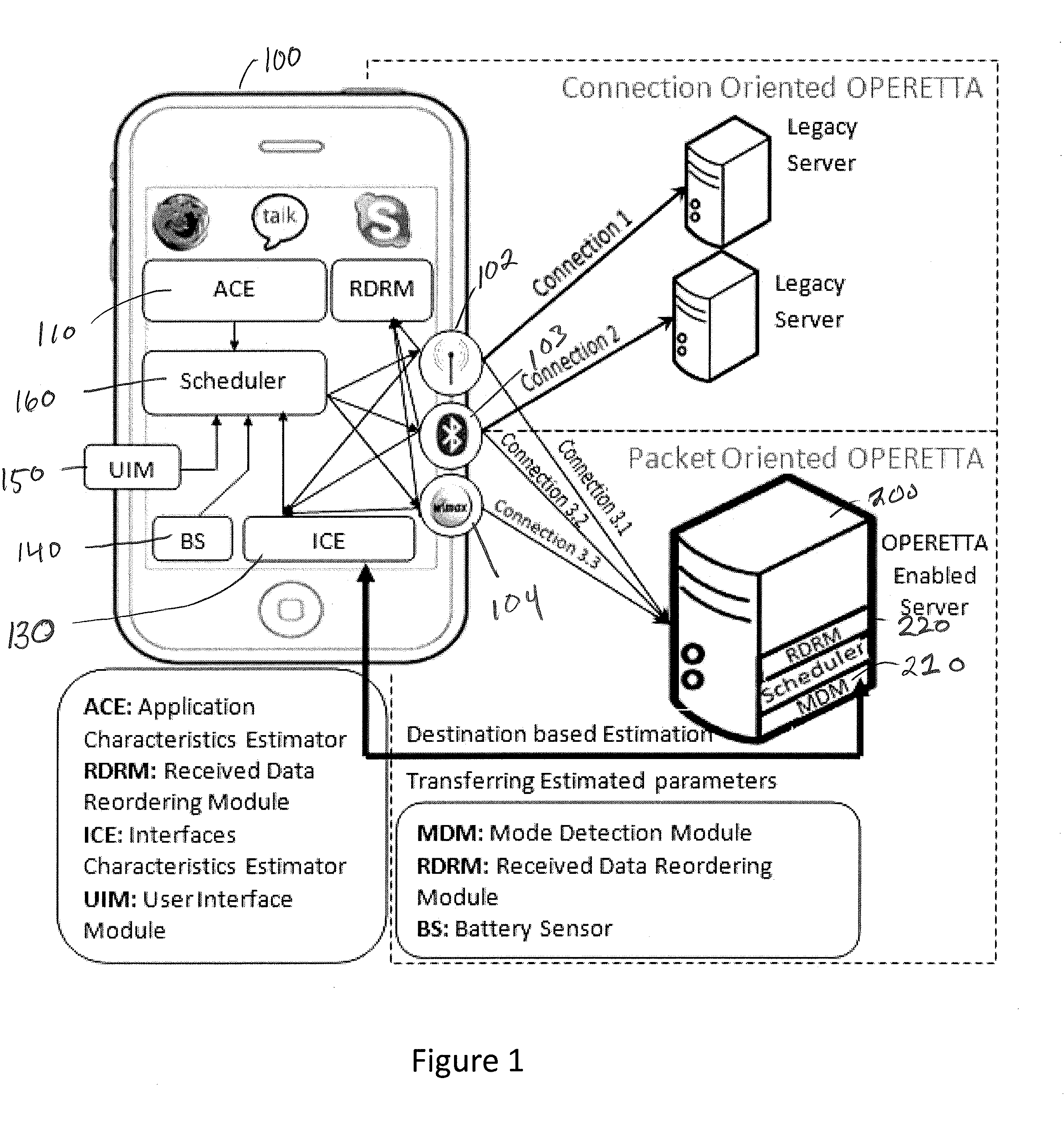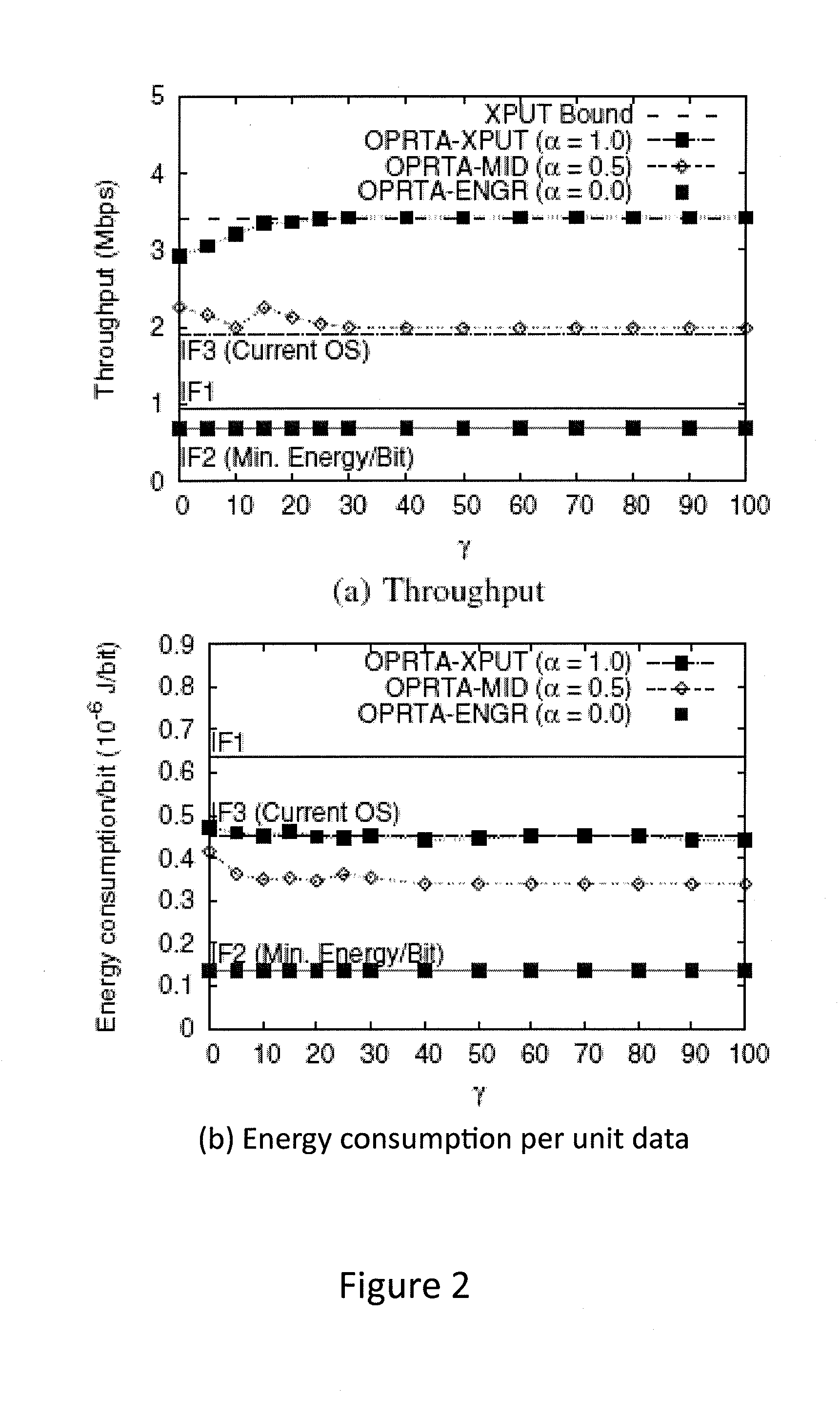Optimal Energy Efficient Bandwidth Aggregation System
a bandwidth aggregation and energy-efficient technology, applied in sustainable communication technology, climate sustainability, high-level techniques, etc., can solve the problems of huge deployment barrier, inability to utilize these existing interfaces together to enhance the overall system performance, and inability to backwards compatibility with previous versions of applications, etc., to achieve the effect of reducing deployment barriers, reducing energy consumption, and reducing energy consumption
- Summary
- Abstract
- Description
- Claims
- Application Information
AI Technical Summary
Benefits of technology
Problems solved by technology
Method used
Image
Examples
Embodiment Construction
[0018]This invention describes an optimal, energy-efficient, deployable bandwidth aggregation system for multiple interface enabled devices.
[0019]System Architecture
[0020]In reference to FIG. 1, in a client 100 equipped with multiple network interfaces connected to the Internet, each interface will have individual characteristics in terms of bandwidth, latency, loss ratio, and energy consumption. The host runs multiple applications with varying communication characteristics. In a first operational mode of the invention, different connections to the interfaces are scheduled such that a connection is assigned to only one of the available interfaces. Once assigned to an interface, all the packets of this connection utilize the same interface. As such, the invention achieves bandwidth aggregation without requiring any changes to legacy servers (the server deals with a normal connection).
[0021]In a second operational mode, if the other end of the connection (i.e., server 200) is also equ...
PUM
 Login to View More
Login to View More Abstract
Description
Claims
Application Information
 Login to View More
Login to View More - R&D
- Intellectual Property
- Life Sciences
- Materials
- Tech Scout
- Unparalleled Data Quality
- Higher Quality Content
- 60% Fewer Hallucinations
Browse by: Latest US Patents, China's latest patents, Technical Efficacy Thesaurus, Application Domain, Technology Topic, Popular Technical Reports.
© 2025 PatSnap. All rights reserved.Legal|Privacy policy|Modern Slavery Act Transparency Statement|Sitemap|About US| Contact US: help@patsnap.com



